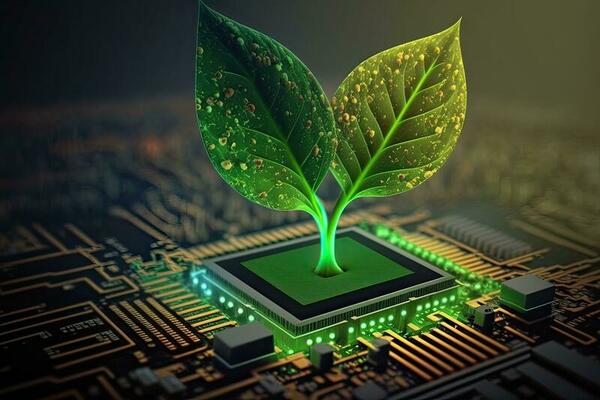
The Technologies Driving the Next Generation of Energy-Efficient Computing
You want the latest tech, but you
also care about the planet. Is it possible to have a high-performance computer
that doesn't consume enough energy to power a small city? Absolutely. The
future is green computing technology built on eco-friendly hardware that
delivers speed and efficiency. Forget about noisy fans and massive power bills.
Emerging technologies like low-power memory, energy-efficient processors, and
smarter power management are paving the way for sustainable computing that
doesn't compromise performance. In this article, we'll explore the hardware
driving a new generation of green PCs and data centers. The solutions on the
horizon will surprise you and give you hope that technology and environmental
responsibility can go hand in hand. Fasten your seatbelt - you're about to take
a ride into the future of green computing technology reimagined.
Green
Computing Reimagined: Eco-Friendly Hardware Materials and Manufacturing
Processes for Energy Efficiency
The tech industry is making huge
strides in developing eco-friendly hardware that reduces energy usage and
environmental impact. Manufacturers are reimagining materials and production
processes to make computing greener.
For starters, biodegradable and
recyclable materials are replacing plastics in hardware components like
casings, cables, and motherboards. These plant-based and recycled materials
reduce waste and pollution. Even packaging is getting a sustainable makeover
with compostable, recyclable materials.
Manufacturing processes themselves
are also going green. More companies are using renewable energy like solar or
wind to power factories and data centers. They're also reducing waste by
reusing and recycling components and water needed for production.
Not only are these eco-friendly
materials and processes better for the planet, but many also reduce costs for
manufacturers in the long run. It's a win-win that leads to greener, more
affordable tech for consumers.
While there's still a long way to go
to reach completely energy-efficient computing, these innovations in materials
and manufacturing are an encouraging step towards a greener future for tech.
Every little bit helps when it comes to reducing environmental impact, so even
small changes can go a long way. Overall, the tech industry's push for
sustainable hardware is something worth paying attention to.
Low-Power
Memory and Storage: The Key to Energy-Efficient Cloud Computing and Data
Centers
Low-power memory and storage are key
to building energy-efficient data centers and cloud computing infrastructure.
Traditional dynamic random access memory (DRAM) and solid state drives (SSDs)
consume lots of energy, generating excess heat that requires cooling - which
uses even more power.
New memory and storage technologies
are changing the game. Low-power double data rate (LPDDR) memory cuts energy
use in half compared to standard DDR. Magnetoresistive random access memory
(MRAM) is a type of non-volatile memory that retains data even when powered
off, using almost no energy.
SSDs based on 3D XPoint or
phase-change memory (PCM) are more efficient than NAND flash. Some startups are
developing radical new storage class memories (SCMs) like carbon nanotube RAM,
ferroelectric RAM (FRAM), and conductive bridge RAM (CBRAM). These exotic
memories promise nearly instant access, high density, and ultra-low power draw.
To maximize energy efficiency, data
centers are optimizing how memory and storage interact. For example, keeping
data in fast, efficient memory as long as possible before committing it to
higher-latency storage. New memory caching systems reduce duplicate data in
memory, storage, and across the network.
The future is bright for sustainable
computing powered by innovative memory and storage technologies. Every small
improvement in efficiency means big energy savings at scale in the cloud. With
continued progress, we'll keep more data online and accessible using less and
less power - that's a win for your budget and the environment.
The
Rise of Low-Power Processors: How ARM, RISC-V, and X86 Are Making Computing
More Sustainable
As computing becomes more powerful,
it also becomes more energy-intensive. To make computing sustainable for the
future, we need hardware solutions that provide more processing power while
using less energy. One of the biggest trends in green computing is the rise of
low-power processors.
ARM
and RISC-V: Doing More with Less
Processors based on ARM and RISC-V
architectures are extremely energy efficient compared to traditional x86 CPUs.
ARM dominates the mobile market, powering the chips in most smartphones and
tablets. RISC-V is an open-source alternative that's gaining momentum. These
architectures use a reduced set of instructions that can execute common tasks
quickly while using little energy.
Energy-Efficient
x86: Improving the Status Quo
While x86 is still the dominant
architecture for PCs and servers, companies like AMD and Intel are making their
chips more energy-efficient. Their latest x86 CPUs add advanced power
management features and are built using more efficient manufacturing processes.
These improvements allow the x86 architecture, long criticized as power-hungry,
to become a greener option.
The
Future is Efficient
As computing continues advancing at
a rapid pace, sustainable hardware is crucial. Low-power processors from ARM,
RISC-V, and x86 will drive huge efficiency gains, allowing us to do more with
less energy. Other technologies like memory and storage are also getting
greener, while renewable energy and improved manufacturing can further minimize
the environmental impact of technology. Working together, these solutions will
enable computing to thrive for generations to come while respecting the planet
that makes it all possible.
Conclusion
You have the power to make a
difference with the technology choices you make. By choosing energy-efficient computer
technology, you're doing your part to build a greener future for computing. New
memory technologies, low-power processors, and smart power management features
are making it easier than ever to go green. Together, these advancements are
driving sustainable innovation that will transform the environmental impact of
technology. So next time you're due for an upgrade, think about the planet and
choose eco-friendly components. Your new green PC will work just as well, and
you'll rest easy knowing you made the earth-friendly option. Every bit helps
when it comes to building a greener tomorrow.
